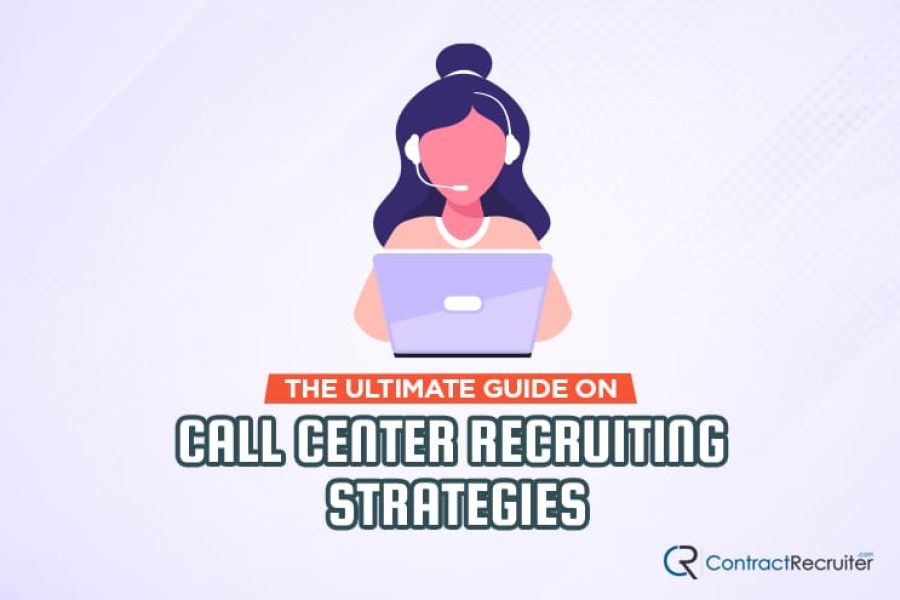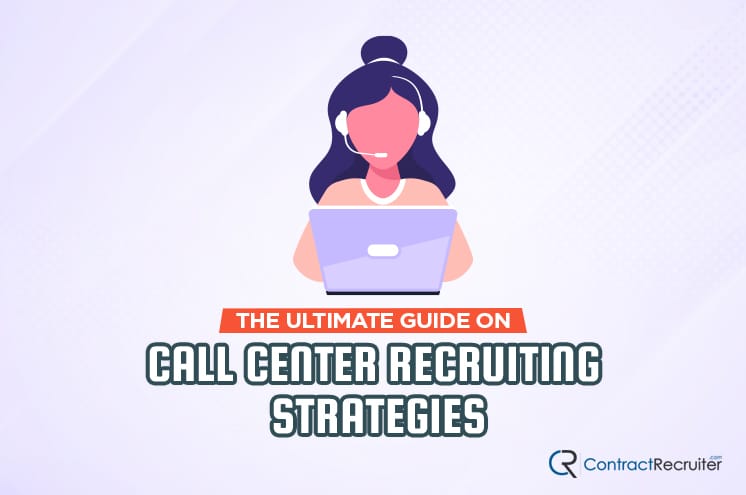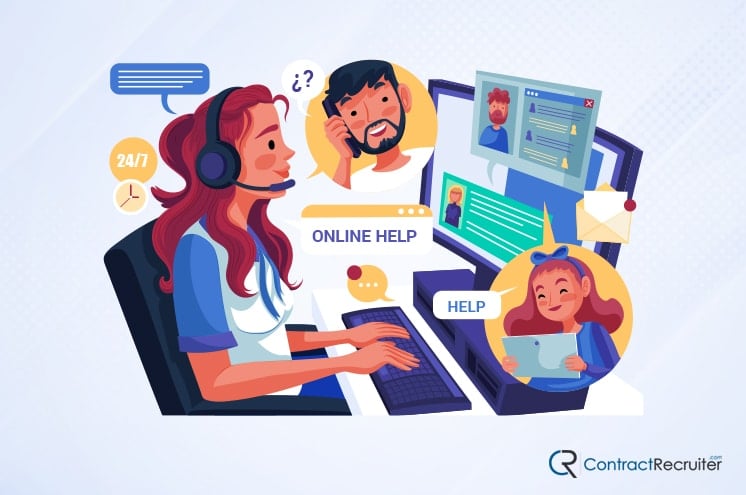Call centers face many unique challenges in terms of employment.
The humble call center is an essential part of many businesses as a customer service and support channel. It’s also largely a thankless department, with many workers burning out quickly. They’re often unsupported and unloved by their parent companies, ignored or hampered by the companies that contract them, and abused by angry customers nearly all the time.
This leads to astonishingly high turnover rates. A standard company doing reasonably well can expect a turnover rate of around 10%; a call center will be lucky to have under 40%. Many call centers experience over 100% turnover rate in a year, as employees hired to replace the ones who quit are themselves burned out and quit in under a year.
That means that call centers have to hire a lot of people, often quite quickly, to maintain staff numbers and distribute the volumes of work they have from their various clients. On top of that, a sudden surge in demand – caused by taking on a new client, a new issue from an existing client, or a scaling up of operations – means volume hiring is an absolute necessity.
How can you work to ensure proper hiring for a call center? A lot goes into it that you have to keep in mind.
Learn About High Volume Recruiting Strategies
Understand What Makes a Good Call Center Employee
Call center employees are asked to do more now than ever before.
For example:
- They must be able to answer phones and solve problems customers have.
- They must be able to deescalate situations and appease angry customers.
- They must be able to respond appropriately to live chat support requests.
- They must have a great listening ability for callers and reading comprehension for chat.
- They must be flexible in solving problems and potentially thinking outside the box.
- They must be able to build a relationship with the customers who call in, especially repeat callers.
- They must be mindful of privacy and information protection regulations, policies, and laws.
- They must be able to keep response and solution times low without leaving customers dissatisfied.
- They must be able to solve issues they can and escalate the ones they can’t.
- They must be able to close out support conversations effectively and with mutual satisfaction.
All of this goes above and beyond “just answering phones.” So much goes into modern customer service, especially front-line, tier-one customer service, that it’s no longer the kind of role you can pick up anyone off the street and train them in a few days to handle.
Understand True Volume Numbers
Call centers, especially independent call centers that contract other businesses as their front-line support (as opposed to an in-house customer service team), need high volume in their hiring. Keeping in mind the average turnover numbers, call centers often need to recruit thousands, or tens of thousands, of hire hires every year.
Volume hiring and volume work considerations exist at every level of a call center. Employees often feel as though their time spent with a call center is not valued, that they are treated as cogs in a machine, utterly replaceable. The unfortunate truth is that, in many cases, that’s how the call center must handle its employees. There’s no room for personalization and job growth when the average tenure for an employee is less than a year.
Understand Volume Hiring
Volume hiring differs from traditional hiring in many different ways.
To name a few:
- It is perpetual. Call center hiring never really stops outside of catastrophe, and even then, it only pauses temporarily.
- It requires automated and data-driven sourcing for a constant stream of optimized candidates entering the candidate pool.
- It tends to lack the personal touch because volume means there’s no time or room for that level of customization. Instead, it relies on a robust but ultimately templated experience.
- It makes heavy use of mostly-automated skills and personality assessments, which are tailored to the role and tightly optimized to filter the best possible candidates for the roles in question.
- It uses automated data analysis to make hiring recommendations. Machine learning, AI filtering, and data flag processing all combine to allow for near-instant decisions in hiring, often with little or no human intervention.
- It minimizes the interview process and uses it more as a spot-check and confirmation of the algorithmic hiring process rather than a human review to make a hiring decision. Ideally, software handles the volume hiring process almost entirely, with humans checking to ensure it hasn’t gone off the rails.
- It uses onboarding via software to likewise automate as much training as possible, to again minimize the need for extraneous human employees simply setting up other employees.
- It is less focused on retaining, promoting, and encouraging employee growth and instead emphasizes preventing attrition and focusing on job performance.
If all of this sounds antithetical to what you know as a traditional hiring process, that’s because it is. Volume hiring, and the pressures of filling hundreds or thousands of positions each month, bring unique challenges that largely require removing slower, variable human intervention.
Above all, volume hiring needs to be scalable. Having a human HR representative oversee the process and personally contact each candidate can become untenable when you need to fill a few hundred roles, let alone thousands.
Volume Hiring Isn’t Cheap
Losing an employee in a traditional business can hurt. The lost time, productivity, and institutional knowledge all have value that is lost. Moreover, the cost of hiring a replacement clocks in at anywhere from 45% to 200% of the lost employee’s salary.
Entry-level employees are less expensive to replace, but the costs add up when you have to hire thousands of them. Data shows that it may cost anywhere between $750 to $3,500+ per employee. It can easily cost in the high six figures, or even the low seven figures, for a mid-sized call center.
Neither is it inexpensive in terms of time. Even with automation, volume hiring is unavoidably lengthy, which causes further issues with candidates turning down roles because they were approached with an offer elsewhere more quickly.
Managing Attrition is Paramount
As much as volume hiring and a vast workforce necessitate certain sacrifices, some of those sacrifices are themselves the cause of many problems in call center hiring.
Call center employees feel impersonal, disrespected, under-compensated, and under-appreciated. When they burn out, they leave. How can your call center reduce attrition?
Raise pay rates. Adequate compensation is often the #1 driving factor in retention, especially for entry-level employees. Call centers are already very low on the overall scale of employee pay rates. Even a relatively minor increase ($25,000 to $30,000, an increase of $5,000 per year) is enough to reduce attrition rates significantly.
Optimize roadblocks and drop-offs in the hiring process. One advantage that volume hiring for a call center has over other hiring processes is a wealth of aggregate data. The sheer volume of data that a call center can process about the hiring flow allows for statistically relevant information. You can map data and monitor the flow of candidates from application to hiring.
Each step of the way, you can identify flaws in the process that lead to good candidates dropping off or poor candidates making it through. You can map changes to outcomes in volume and make more changes to optimize the process.
Measuring the right metrics is also critical to this process.
- Cost per hire
- Time to hire
- Hire quality and performance
- Attrition and turnover rates
- Duration of employment on average
- Overall satisfaction and/or conversion rates
Measuring relevant metrics allows you to make relevant decisions.
Adapt to modern pressures. The COVID-19 pandemic immediately made a call center environment – often open-plan, interchangeable, hot-swap, or otherwise crowded – a much more dangerous place. Though some call center systems have operated as a remote and distributed system for some time, many others have had to adapt.
Moreover, the pressure to return to a central facility is mounting, but causing high attrition levels from employees who either don’t feel safe doing so or who have come to recognize the value of working from home. Thus, you can cut attrition by continuing to offer remote work as much as possible.
Other such changes exist as well and depend on your call center environment. Either way, a crucial part of successful volume hiring is increasing retention/reducing attrition to reduce the need for hiring in the first place.
Be realistic and honest with your candidates. Call center work is often tedious, repetitive, and thankless. Call center employees burn out when they are consistently abused by the people they’re trying to help. When they balance the mental and emotional abuse against the pay and benefits they receive, and determine it’s no longer worth it, they leave.
Of course, you can strive to provide a safer environment, empower employees to handle angry customers more effectively, and offer benefits (such as therapy and mental healthcare) to help mitigate these issues. This can be excellent in the long term but may require an up-front investment.
Know When Volume Hiring Isn’t Valuable
Volume hiring is critical for entry-level call center employees, but a call center is more than just the people who answer the phones. A good call center has supervisors, tier-2 support agents, people empowered to make decisions, people to contact clients and escalate problems, and more.
Many of these roles are higher than entry-level and, as such, require a more traditional hiring process. These roles are where attrition becomes much more expensive and where hiring with the human touch is much more important.
Attempting to use volume hiring strategies for higher-level roles will result in worse outcomes at every level in an organization, as no continuing, no culture, and no humanity can survive. At this level, you need a traditional hiring process that is just as optimized but differently.
Pre-Employment Assessments are Critical
A key aspect of an automated, effective volume hiring process is using skills and ability assessments.
Often, your hiring process will need more than one to assess different aspects of your candidates:
- A personality assessment can be valuable to build a candidate persona that ensures hiring the most skilled candidates in terms of their ability to provide support, deescalate situations, and close calls effectively.
- A skills assessment can give you a picture of what skills and abilities your candidates need to be successful in their role without a significant investment in training. Though entry-level, call centers still may require a baseline level of skills inherent in the candidates.
- A situational assessment can pose hypothetical scenarios to potential candidates and ask for their responses, allowing you to watch for red flags that would disqualify a candidate from long-term employment.
Of course, assessments aren’t always practical. Cognitive ability and IQ assessments are often off-target and tend to test more cultural knowledge than inherent intelligence, for example. In extreme cases, this can even lead to unintentional bias in hiring.
Keep Trying, Optimize, and Succeed
Volume hiring for a call center is never going to be easy. It’s a constant process of optimization, data analysis, and improvement. Additionally, cultural shifts and the evolution of technology combine to require your call center to keep on top of the cutting edge. Otherwise, you fall behind, and it becomes more and more challenging to maintain adequate hiring.
Strive to continually improve in all parts of your call center business, from hiring to retention to performance. Remember that many seemingly-important call center metrics can disincentivize positive behavior. Remember that minimizing costs doesn’t always balance out with higher attrition rates. Remember that technology is continually improving, and it’s well worth reviewing for any new options to pursue.
It doesn’t have to be an endless, impossible task to staff a call center. Success is possible; it just requires ongoing effort and continual improvement.
Do you have any questions or concerns about recruiting for a call center? Are you wondering how you can potentially reduce attrition in your call center? Was there anything we mentioned in today’s article that you would like more clarification on? If so, please leave a comment down below, and we’ll get a conversation started! Recruiting for your call center can be a significant challenge, but it doesn’t have to be, so we’d love to assist you however we can!










